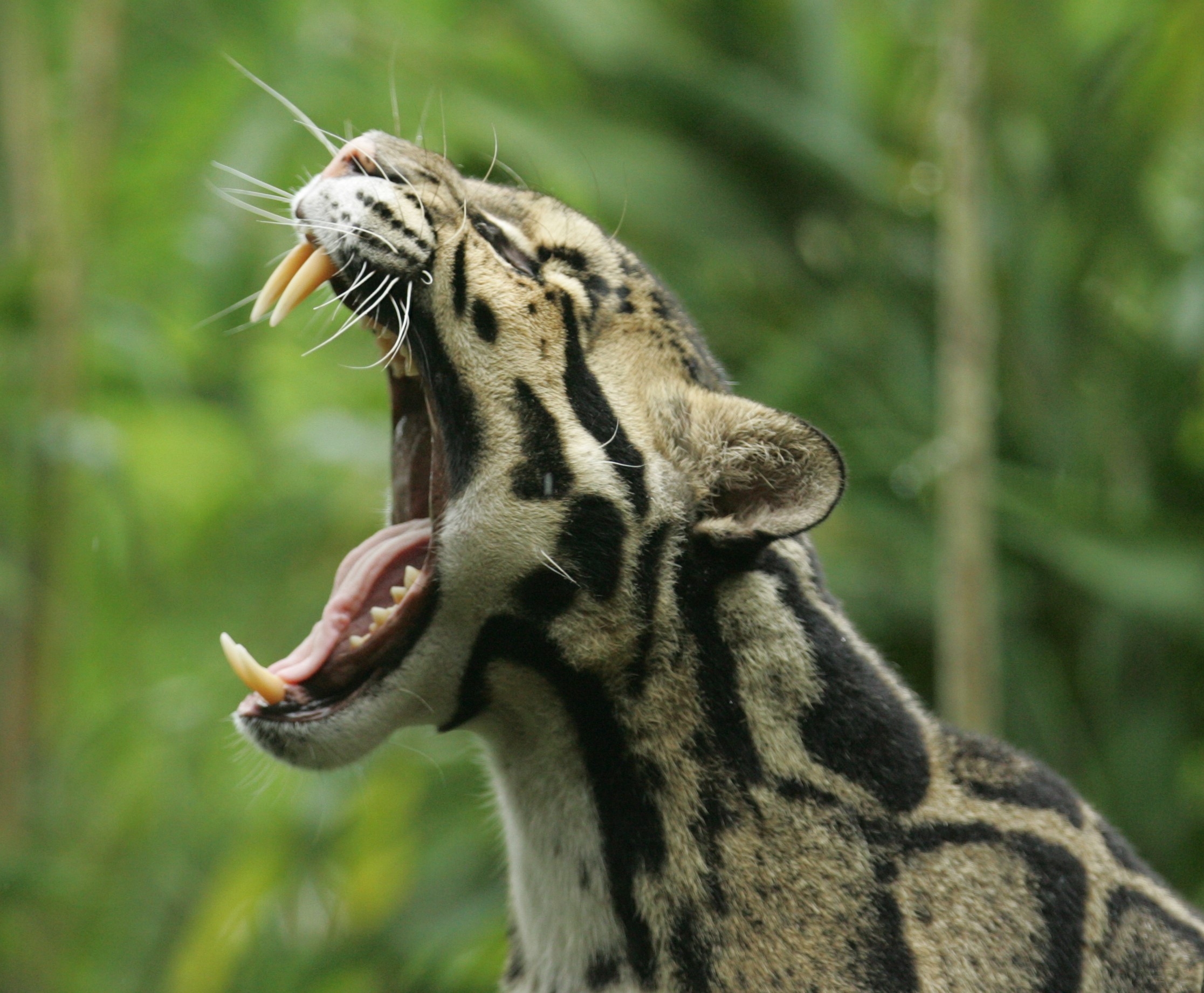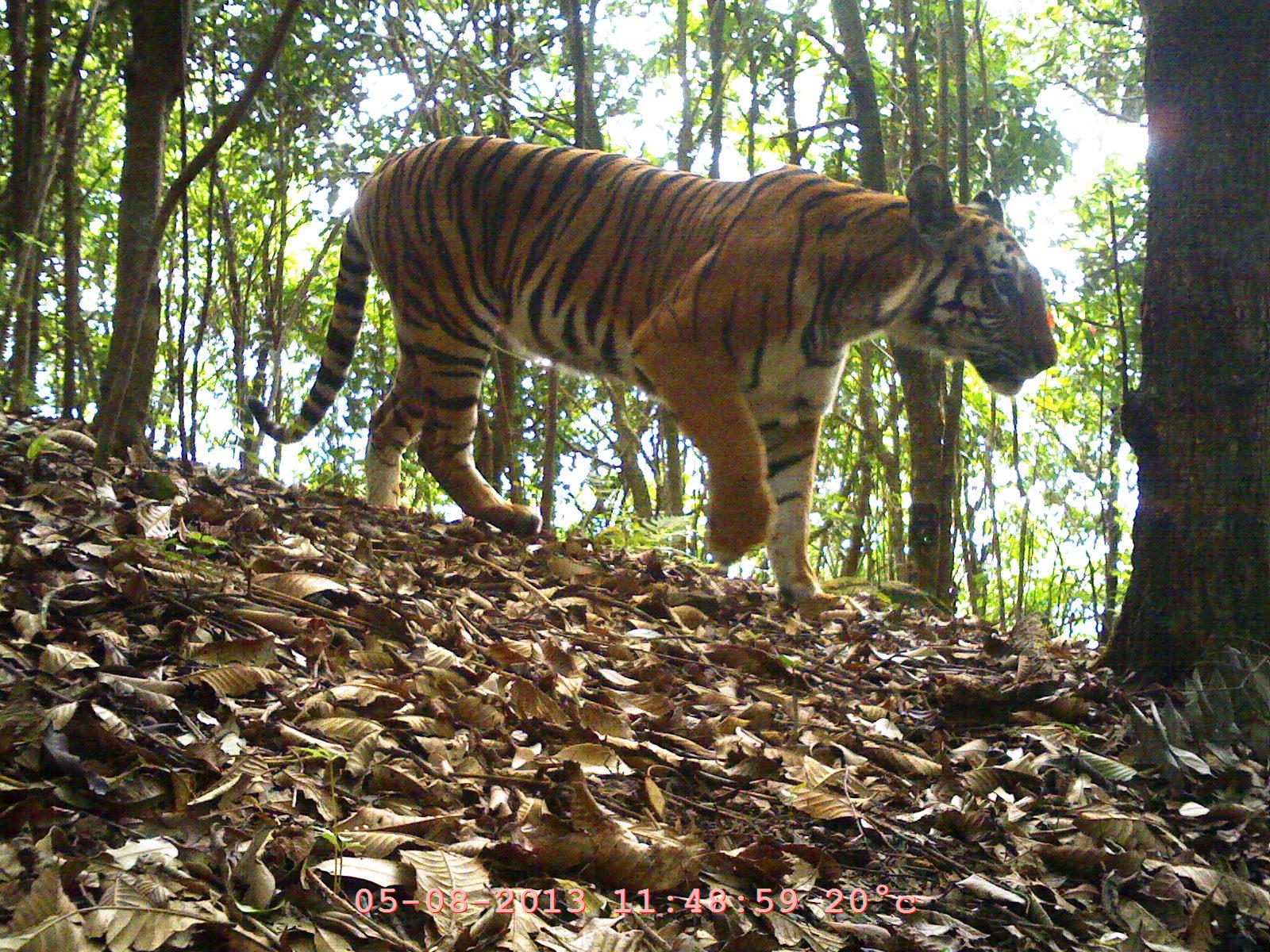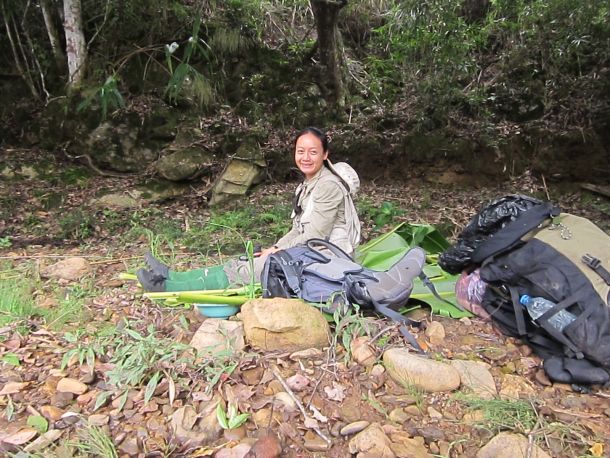News
Researchers from WildCRU conducted the first ever study of the clouded leopard diet
Despite numerous studies on the clouded leopard, no previous study determined their diet, primarily because clouded leopards don’t typically defecate along trails to mark their territory, which is a common behavior in most other felid species, so their scats (i.e., droppings) are rarely round. Clouded leopards are the smallest of the big cats (i.e., Pantherinae), but they have skull and dental morphologies that set them apart from all extant felids. They have the longest relative canines and largest gape of any extant felid species (see photo), and other dental, jaw, and skull morphologies that approach those of primitive saber-toothed cats. These unique adaptations are probably related to major differences in killing behavior compared to other extant felids. Whereas most large felids subdue large prey with a suffocating throat bite, available evidence indicates clouded leopards can kill large prey with a powerful nape bite. Nevertheless, most observations concerning predatory behavior of clouded leopards seem to suggest that they mainly prey on primates and small ungulates such as muntjac (Muntiacus spp.). More detailed information is needed about clouded leopard diets, especially for determining their preferred prey, which could aid conservation efforts given that prey depletion is a major threat for this species.
The diet and prey selection of tigers has been determined from several sites in the Indian subcontinent and Russian Far East, and a review of dietary studies primarily from those regions showed that tigers preferentially preyed most on wild pig (Sus scrofa) and sambar (Rusa unicolor). However, food habits of tigers in Southeast Asia are almost unknown. Dietary studies of the Indochinese tiger were only conducted in Thung Yai-Huai Kha Khaeng (TY-HKK) protected-area complex in western Thailand, where tigers were found to consume both small and large ungulates. However, prey selection of tigers was not determined, so it was unknown which prey were most important to tiger. More information about tiger diets is needed from Southeast Asia to aid conservation efforts there, given that prey numbers limit tiger population size, and prey depletion is a major threat to tiger. Obtaining dietary data from closed evergreen forests is especially important because, in contrast to most other areas, large ungulates might not be the main prey of tigers in this habitat type.
Akchousanh Rasphone, a former WildCRU student who obtained her DPhil in 2018, and Jan Kamler, another WildCRU researcher, conducted a study in the Nam Et-Phou Louey (NEPL) protected area in northern Laos to determine the diet and prey selection of clouded leopards and tigers. Scats of carnivores were collected during field trips to set cameras and conduct other surveys, and DNA analysis confirmed 14 scats were from clouded leopards and 21 were from tigers. Scats were washed in a laboratory and contents were identified to species based on comparisons to a reference collection. Results were converted to biomass consumed, and compared to prey densities (determined from occupancy surveys) to determine prey selection for each species.
For clouded leopard, the primary prey was wild pig (Sus scrofa; 33% biomass consumed), followed by greater hog badger (Arctonyx collaris; 28%), small rodents (15%), and mainland serow (Capricornis sumatraensis; 13%; hereafter, serow). Compared to availability, serow was positively selected by clouded leopards, whereas all other ungulate species were consumed in proportion to availability or avoided. Overall, our results indicated that clouded leopards are generalist predators with a wide prey spectrum. Nonetheless, the most unexpected result was that mid-sized ungulates (50-150 kg) comprised nearly half of their diet, and were the preferred prey. Our results support the hypothesis that the enlarged gape and elongated canines of clouded leopards are adaptations for killing large prey.
For tigers, the primary prey was wild pig (44%), followed by serow (18%), sambar (Rusa unicolor; 12%), and Asiatic black bear (Ursus thibetanus; 10%). Compared to availability, serow was positively selected by tigers, whereas all other ungulate species were consumed in proportion to availability or avoided. This is the first dietary study of tigers to show that serow are their preferred prey, and that black bears appear to be important prey in closed evergreen forests.
Because serow was the only ungulate preferred by clouded leopards and tigers, this prey species likely is important for the conservation of both felids, at least in some areas of Southeast Asia. In protected areas containing hilly evergreen forests where clouded leopards or tigers occur, we recommend that park managers monitor serow populations to ensure that both large felids have an adequate population of their preferred prey. The mainland serow is classified as ‘Vulnerable’ by the IUCN because its populations are fragmented and in rapid decline due to poaching and habitat loss. Therefore, reintroductions or supplemental releases of serow might be necessary in areas where serow populations have become decimated by poaching because scarcity of preferred prey can hamper the recovery of clouded leopards and tigers.
Rasphone, A., A. Bousa, C. Vongkhamheng, J. F. Kamler, A. Johnson, and D. W. Macdonald.
Diet and prey selection of clouded leopards and tigers in Laos. Ecology and Evolution 12:e9067.
-
 Typical landscape of the study site in the Nam Et-Phou Louey National Protected Area, northern Laos.
Typical landscape of the study site in the Nam Et-Phou Louey National Protected Area, northern Laos. -
 A yawning clouded leopard demonstrates the longest relative canines and largest gape of any extant felid species ( © Christian Sperka Photography)
A yawning clouded leopard demonstrates the longest relative canines and largest gape of any extant felid species ( © Christian Sperka Photography) -
 Tiger in NEPL
Tiger in NEPL -
 Dr. Akchousanh Rasphone on a field trip in NEPL
Dr. Akchousanh Rasphone on a field trip in NEPL





